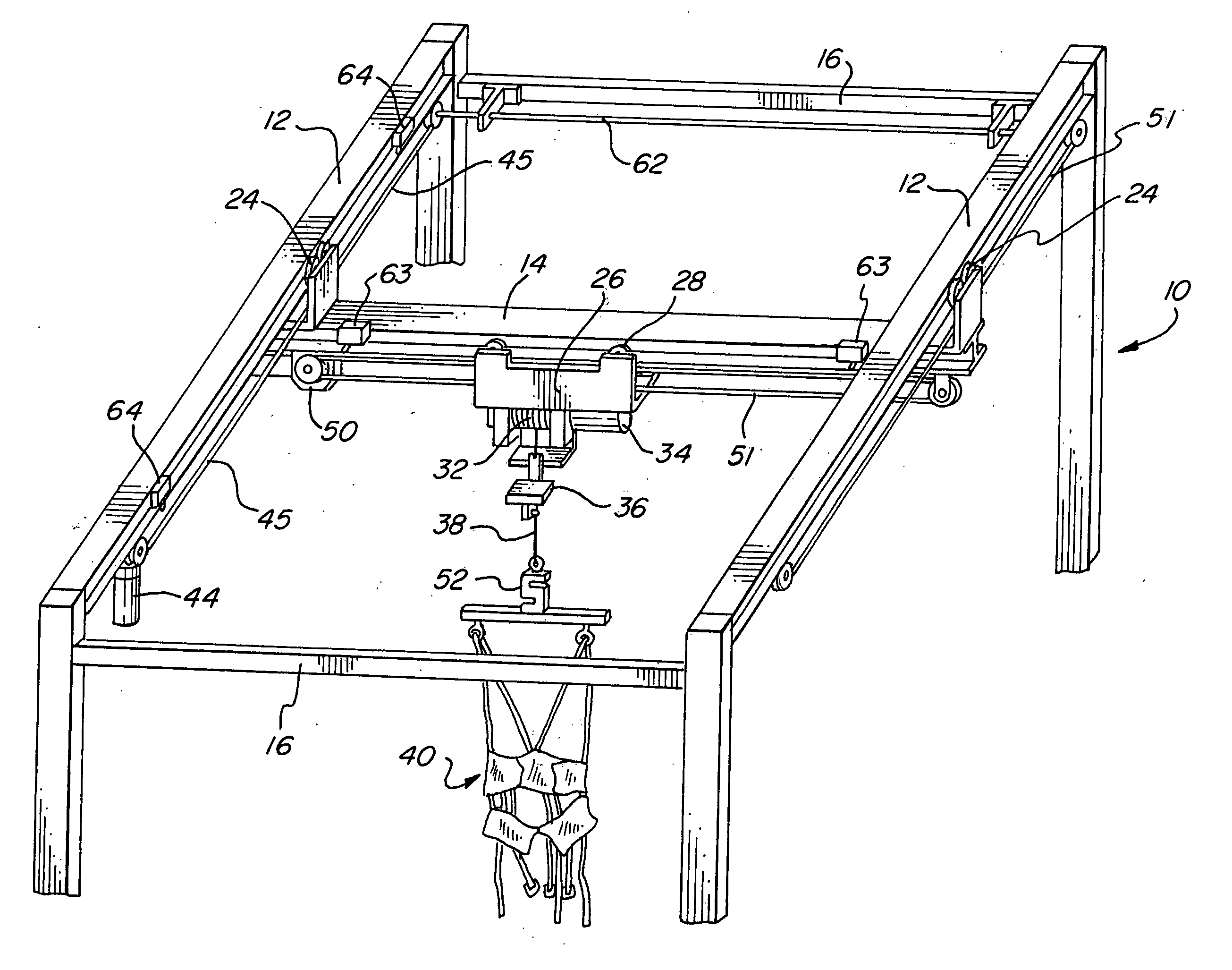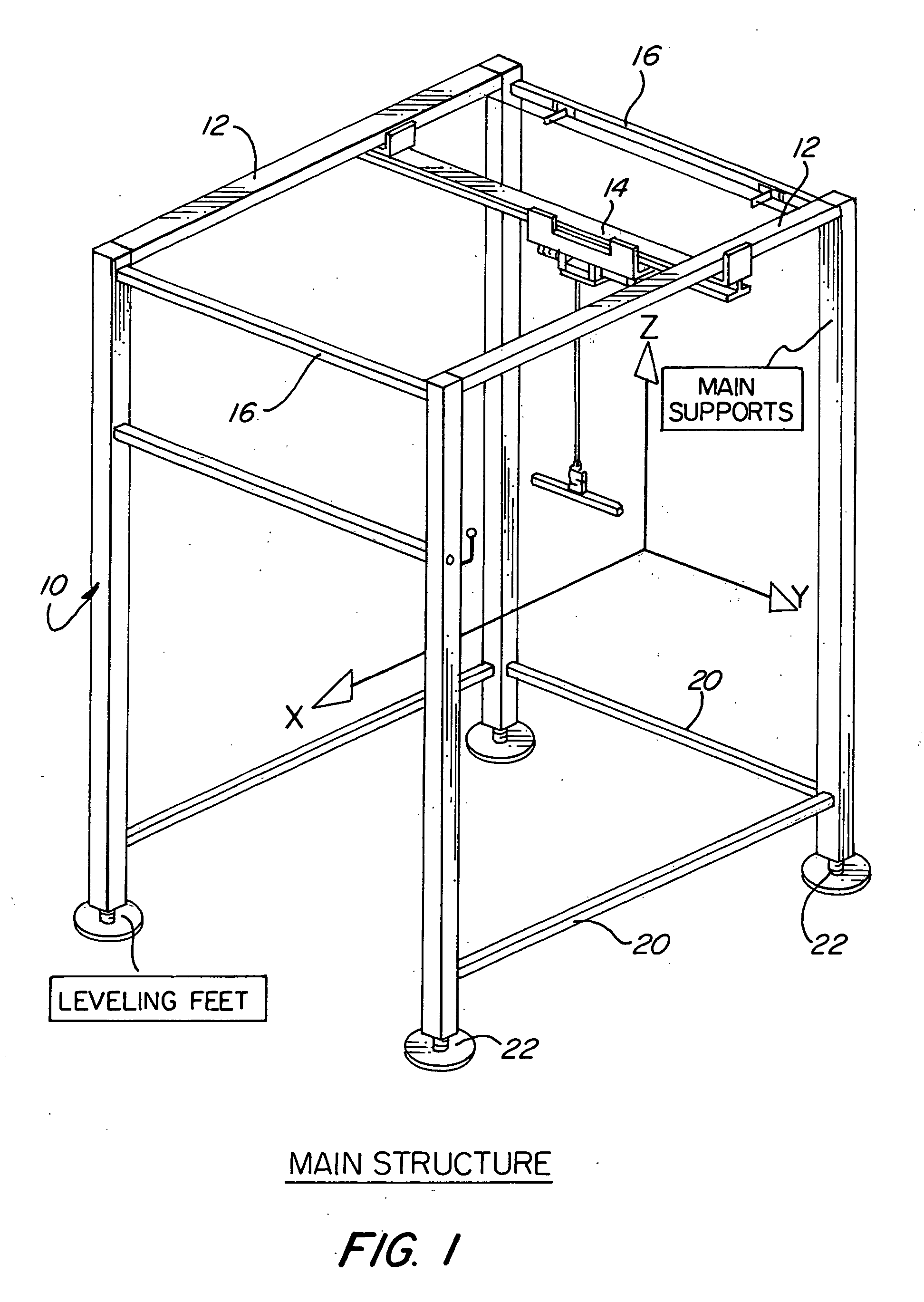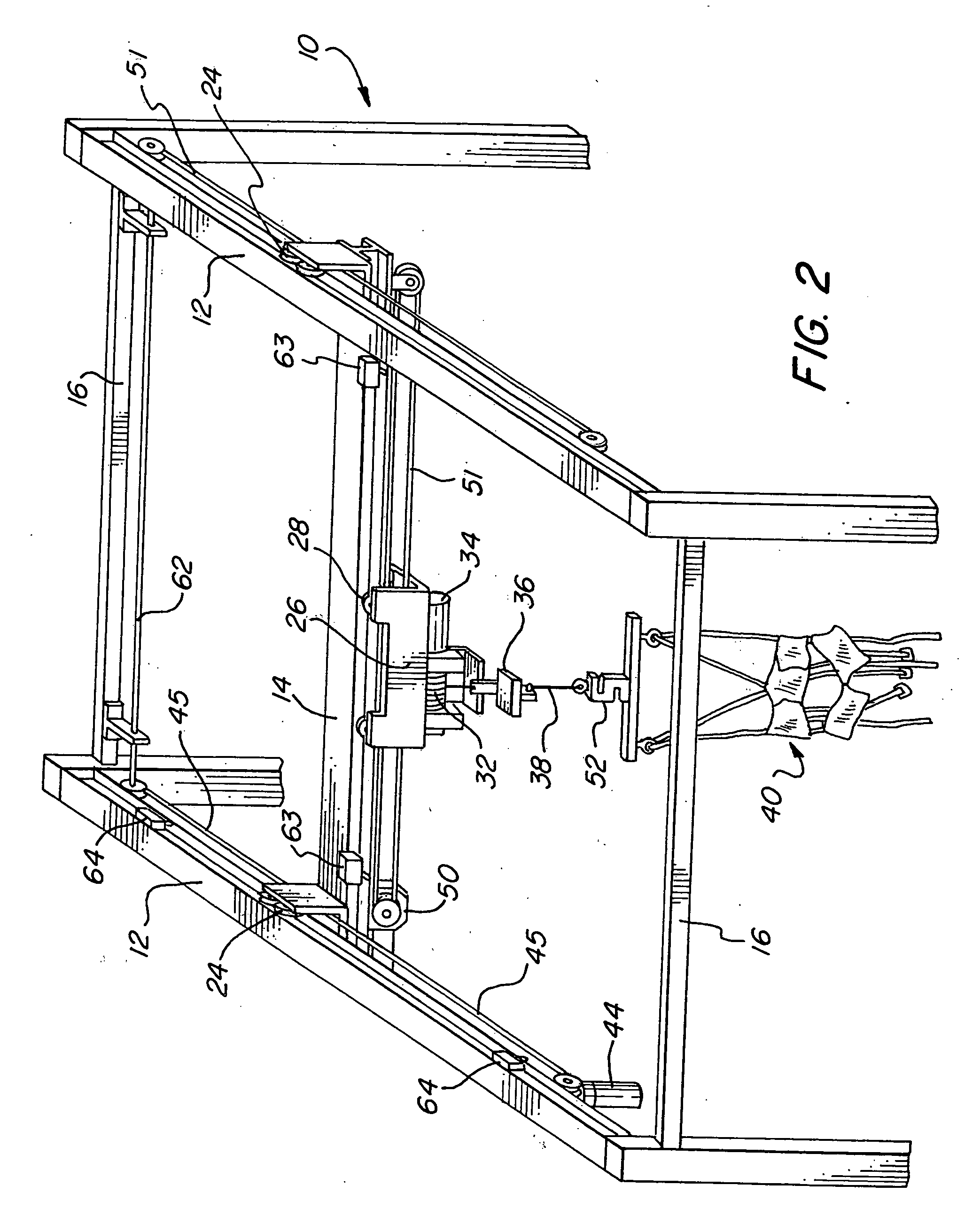Ambulatory suspension and rehabilitation apparatus
a technology of ambulatory suspension and rehabilitation apparatus, which is applied in the direction of walking aids, physical therapy, chiropractic devices, etc., can solve the problems of significant morbidity, no system allows free ambulatory movement in all directions, and no system can continuously monitor the axial load
- Summary
- Abstract
- Description
- Claims
- Application Information
AI Technical Summary
Benefits of technology
Problems solved by technology
Method used
Image
Examples
Embodiment Construction
[0032] Turning first to FIG. 1, a floor supported framework generally designated by the numeral 10 includes a pair of spaced rails 12a, 12b, a bridge 14 extending between and movably supported on the rails 12, transverse end frame members 16, corner posts 18 and tie members 20. The feet 22 at the base of the posts 18 are adjustable for leveling the framework 10 on a support surface.
[0033] As seen in FIG. 2, the bridge 14 has rollers 24 at its ends which roll on the rails 12. Both the rails 12 and the bridge 14 are designed as I-beams providing the track surfaces. Movably supported on the bridge 14 is a trolley generally designated by the numeral 26 including rollers 28 which ride on the bridge 14.
[0034] As seen in FIG. 3, the trolley 26 has a hoist 32 and a motor 34. A cable 38 is wound about the hoist 32 and the depending cable 38 carries a load cell force sensor assembly 30.
[0035] The cable 38 carries the harness or jacket 40 in which the patient is secured. An XY tilt sensor 3...
PUM
 Login to View More
Login to View More Abstract
Description
Claims
Application Information
 Login to View More
Login to View More - R&D
- Intellectual Property
- Life Sciences
- Materials
- Tech Scout
- Unparalleled Data Quality
- Higher Quality Content
- 60% Fewer Hallucinations
Browse by: Latest US Patents, China's latest patents, Technical Efficacy Thesaurus, Application Domain, Technology Topic, Popular Technical Reports.
© 2025 PatSnap. All rights reserved.Legal|Privacy policy|Modern Slavery Act Transparency Statement|Sitemap|About US| Contact US: help@patsnap.com



